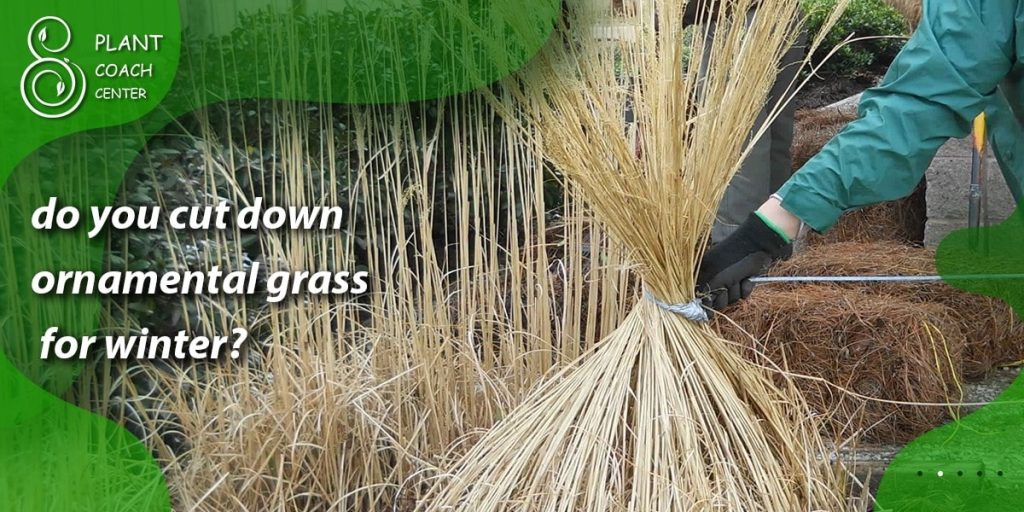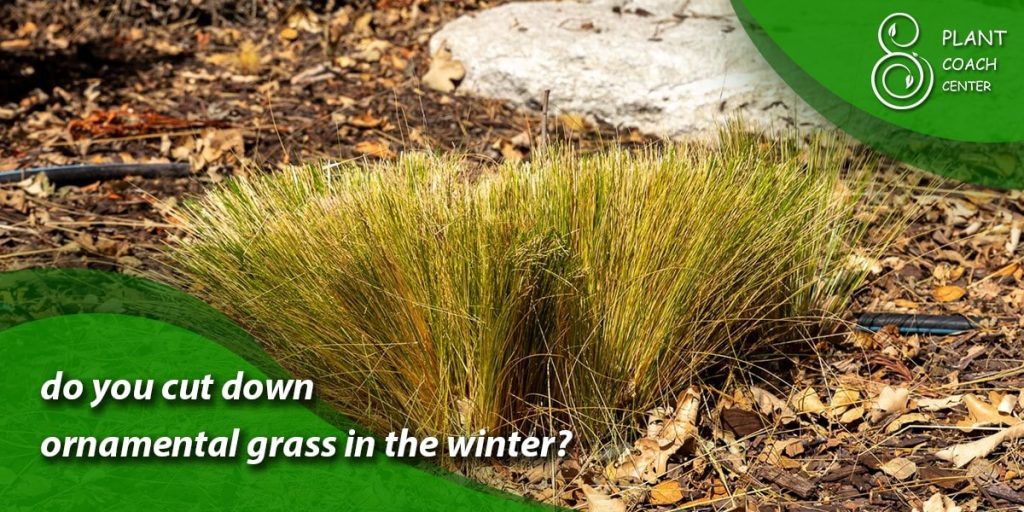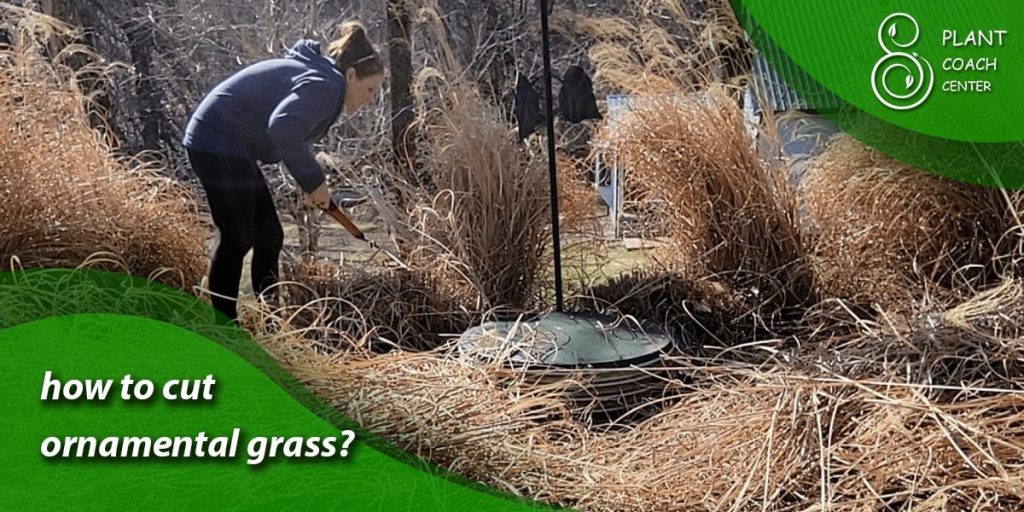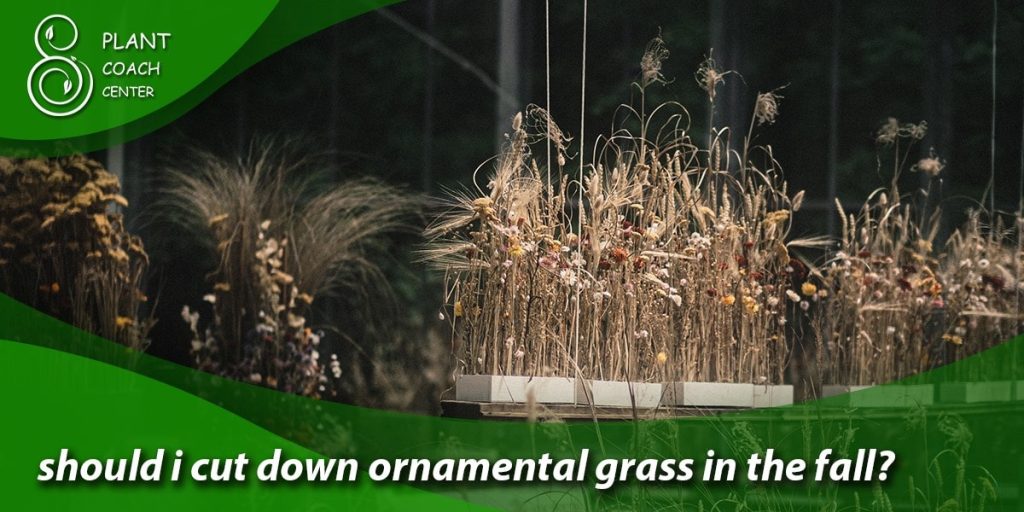When to Cut Down Ornamental Grass?
Welcome to the world of ornamental grasses, where nature’s artistry takes center stage in your landscape. These graceful, swaying wonders can transform your outdoor space, adding texture, movement, and a touch of the wild. As the seasons unfold, so does these grasses’ enchanting display of colors and forms. But amidst this natural splendor, a question arises: When is the perfect moment to trim down these botanical beauties? Much like a conductor guiding an orchestra, knowing when to wield your pruning shears requires understanding nature’s delicate rhythms.
In this article, we journeyed through the changing landscapes of ornamental grass maintenance, uncovering the secrets in each season’s symphony. From deciphering the nuanced cues that grasses provide to mastering the art of timing, we delve into the intricacies of cultivation that ensure your outdoor sanctuary remains a picturesque haven year-round. So, join us as we unravel the mystery behind enhancing your garden’s allure through the careful choreography of trimming ornamental grasses.

Seasonal Symphonies: Exploring the Best Times of Year to Trim Ornamental Grass
Just as a symphony progresses through movements, each season brings its own unique rhythm to the world of ornamental grasses. Understanding these seasonal symphonies is critical to mastering the art of trimming these delicate performers for maximum impact.
Spring Crescendo
As winter’s frosty grip loosens, the stage is set for the first growth movement. Spring signals the awakening of dormant grasses, with fresh green shoots unfurling and reaching for the sun. This is the ideal time for a gentle trim, removing any damaged or weather-worn growth from the previous year. Be cautious not to cut too close to the base, as these young shoots are fragile and need protection.
Summer Serenade
With the sun at its zenith, ornamental grasses are in full sway. Allow them to bask in their splendor during this season. Trimming during summer is minimal, focusing on removing spent blooms or unruly growth that disrupts the overall aesthetic. These grasses actively engage in photosynthesis, providing nourishment for the months ahead.
Autumn Overture
As summer wanes and a crisp breeze creeps in, the orchestra of colors begins. Ornamental grasses undergo a final flourish, painting landscapes with hues of gold, amber, and fiery red. Leave the grasses be during this time, as their fading foliage adds depth to the autumn tableau. Enjoy their graceful dance and wait until late autumn to begin the significant trim.
Winter Finale
As the year draws to a close, the final movement arrives. Dormancy sets in, and the once-lush grasses become delicate, dried remnants. This is when the last, thorough cut occurs, just before new growth emerges in the spring. Shear the grasses close to the ground to allow the fresh shoots ample room to rise. Consider leaving a few inches for protection against frost.
Reading the Grasses: Understanding Visual and Textural Cues for Pruning
Just as a seasoned musician can discern subtle nuances in a melody, a skilled gardener learns to read the visual and textural cues ornamental grasses offer. These cues provide valuable insights into when and how to trim, ensuring a harmonious and flourishing landscape.
Visual Clues
- Growth Height: Pay attention to the height of the grass. Most varieties tend to achieve their maximum size during the midsummer months. Once you notice the grass’s growth slowing down or stabilizing, it might be time for a trim.
- Foliage Color: Changes in foliage color can indicate the grass’s health. If you notice discoloration or browning, it could be a sign of disease or stress. Trim away the discolored portions to encourage new, vibrant growth.
- Seed Heads: Ornamental grasses often produce intricate and captivating seed heads. These add character to your garden throughout the winter months. Consider waiting until late winter or early spring to trim these seed heads, allowing your garden to enjoy a unique aesthetic during the colder seasons.
Textural Clues
- Texture Changes: Run your fingers through the grass. If you feel a lot of dead, dry, or damaged foliage, it’s a good indicator that a trim is due. Removing this material improves the plant’s appearance and promotes healthy growth.
- Crown Inspection: Gently part the grass to inspect its crown, where the leaves meet the roots. If you notice the center of the crown becoming hollow or dead, it’s time for a rejuvenating cut. Trim the grass back to a few inches above the height to encourage fresh growth.
- Vigorous Growth: When new growth emerges from the base and the outer growth begins to look tired, it’s a clear sign that your grass is ready for a trim. This helps maintain the grass’s overall shape and prevents it from becoming overly dense.

Winter Wrangling: Techniques for Maintaining Ornamental Grasses During Cold Months
As winter blankets the landscape in a frosty embrace, maintaining your ornamental grasses takes on a new dimension. While these grasses offer captivating beauty even in their dormancy, a few strategic practices can ensure their health and aesthetic appeal throughout the colder months.
Leave the Foliage
Though cutting down all the grasses once winter arrives may be tempting, consider leaving them standing. The dried foliage adds a rustic charm to the winter scenery and provides shelter for birds and small creatures seeking refuge from the cold.
Winter Trimming
In regions with heavy snowfall, tall grasses can become weighed down and potentially damaged. To prevent this, trim the grasses to about 6 to 8 inches above the ground in late fall or early winter. This shorter length helps prevent snow accumulation while preserving the grass’s beauty.
Binding Technique
Consider gently tying the foliage together with twine for exceptionally tall or delicate grasses. This technique prevents individual blades from splaying out and becoming tangled during winter weather.
Compost Cover
After trimming, consider using the cut grass as a natural mulch around the base of the remaining plant. This protective layer helps insulate the roots from extreme temperatures and adds valuable organic matter to the soil as it decomposes.
Container Care
If you have ornamental grasses in containers, move the containers to a sheltered area like a garage or shed to protect the plants from freezing temperatures and harsh winds. Water the plants sparingly during winter to prevent the soil from becoming waterlogged.
Spring Planning
While tending to your grasses in winter, consider planning for spring. Take note of dead or overcrowded areas that might need more extensive pruning once the warmer weather returns.

Spring Awakening: Reviving Your Landscape with Proper Pruning Approaches
As the frost retreats and the world awakens from its winter slumber, your ornamental grasses take center stage in the grand performance of spring. This is the time to usher in new growth and rejuvenate the landscape, and understanding the nuances of spring pruning is essential to kick-start this awakening.
Assess Winter Damage
Before embarking on your spring pruning journey, evaluate the condition of your grasses. Trim away any sections that have suffered from winter damage, cutting back to where healthy growth begins.
Timing Matters
Early spring, when the threat of severe frost has passed but new growth hasn’t exploded yet, is the prime time for trimming. This timing ensures you don’t inadvertently remove emerging shoots while allowing plenty of time for fresh growth to flourish.
Progressive Pruning
When dealing with established clumps of grasses, consider progressive pruning. Trim only a portion of the grasses at a time, allowing the remaining amount to provide some shelter and protection for the young shoots. This method also ensures your garden retains a visual appeal throughout the pruning process.
Height and Shape
Tailor your pruning approach based on the desired height and shape of your ornamental grasses. Some varieties look stunning when trimmed to a few inches above the ground, while others maintain their charm with slightly more height. Be attentive to the natural growth habit of each grass type.
Divide and Conquer
Spring is also an opportune time to divide overgrown clumps. Carefully lift the grass clump, separate it into smaller sections, and replant the divisions. This encourages healthier growth and prevents overcrowding.
Summer Elegance: Tips for Achieving a Balance Between Growth and Aesthetics
As the sun dances across the sky and the days lazily into warm evenings, your ornamental grasses transition into their season of summer elegance. While growth is in full swing, maintaining the balance between their natural vitality and your garden’s aesthetics becomes a delightful challenge.
Minimal Summer Trimming
Unlike the pruning fervor of spring, summer calls for a lighter touch. Avoid major trimming during this time, as the grasses are focused on energy production and supporting their lush foliage.
Remove Spent Blooms
As various grass species send up their captivating seed heads, some may begin to fade as summer progresses. Removing these spent blooms keeps the plant looking tidy and redirects energy back into healthy growth.
Manage Height and Structure
Some grasses can grow surprisingly tall during summer, potentially overshadowing smaller plants. Use thin stakes or inconspicuous supports to gently guide the growth and prevent flopping.
Watering Wisdom
Adequate watering during the summer months is crucial. Like all plants, ornamental grasses appreciate a consistent water supply to support their vigorous growth. Water deeply and infrequently to encourage deep-root development.
Divide with Caution
While summer is a time of growth, it’s not always the best time to divide ornamental grasses. Dividing during periods of active growth can stress the plants. Consider reserving major divisions for late winter or early spring.
Enjoy the Display
Let the grasses be the stars of your summer landscape. Their lush foliage and graceful movements under the summer breeze contribute a unique element of beauty that doesn’t require constant intervention.

Autumn Farewell: Embracing the Beauty of Dormancy and Preparing for New Growth
As the air turns crisp and leaves paint the landscape in shades of gold and crimson, your ornamental grasses begin their graceful transition into autumn. This period of dormancy is a time of reflection and preparation, where the focus shifts from growth to preservation, ensuring a captivating display even as the year winds down.
Admire the Fading Beauty
As the days grow shorter, the foliage of your ornamental grasses transforms into a symphony of warm colors. Resist the urge to prune immediately, as the fading grasses contribute to the stunning autumn palette.
Delay Pruning
Allow the grasses to stand through the early days of autumn, providing texture and interest to the garden and offering a habitat for overwintering wildlife.
Late Autumn Trim
Toward the end of autumn, once most of the foliage has turned brown and the grasses have entered full dormancy, it’s time for the final farewell. Trim the grasses to a few inches above the ground, removing the spent growth to make way for new shoots in the coming spring.
Seed Head Preservation
Consider leaving some of the seed heads intact throughout the winter. These architectural elements add visual interest to the winter landscape and provide a valuable food source for birds.
Mulch and Protect
After the final trim, provide a layer of mulch around the base of the grasses. This helps insulate the roots from extreme temperature fluctuations and protects against frost heaving.

Exceptional Care Cases: Navigating Pruning Strategies for Different Ornamental Grass Varieties
Within ornamental grasses, various varieties exist, each with its own personality and growth habits. Navigating the pruning needs of these unique specimens requires a tailored approach, ensuring that your garden remains a showcase of their distinct beauty.
Fountain Grass (Pennisetum)
This graceful grass boasts elegant arching foliage and feathery plumes. In late winter or early spring, trim fountain grass back to a few inches above the ground, removing the previous year’s growth to make way for new shoots.
Maiden Grass (Miscanthus)
Known for its showy plumes and arching foliage, maiden grass benefits from an intricate trim in early spring before new growth emerges. Cut back to about 6 inches above the ground to rejuvenate the plant.
Switch Grass (Panicum)
Switchgrass adds vertical drama to the landscape. Trim it back to a height of 6 to 12 inches in late winter or early spring. This allows for a fresh start while retaining the plant’s form.
Feather Reed Grass (Calamagrostis)
This grass offers an upright structure with feathery plumes. Trim feather reed grass in late winter or early spring, leaving about 6 inches of the previous year’s growth.
Japanese Forest Grass (Hakonechloa)
With its cascading foliage, this grass requires a lighter touch. Trim any dead or damaged growth in late winter, but avoid heavy pruning to preserve its delicate form.
Blue Oat Grass (Helictotrichon)
This striking grass maintains its appeal even in winter. While you can trim away dead blades in late winter, it’s often best to avoid extensive pruning to retain its attractive silvery-blue color.
Sedge (Carex)
Sedges vary widely, so their pruning needs can differ. Some can be trimmed in early spring to remove old growth, while others may require light maintenance throughout the year.
Mexican Feather Grass (Nassella)
This airy grass requires special consideration. Trim back in late winter to remove dead growth, but be cautious not to cut too close to the base, as it can be sensitive.
Zebra Grass (Miscanthus sinensis ‘Zebrinus’)
This distinct grass features horizontal striping. Trim zebra grass back in late winter or early spring to encourage new growth while leaving its unique striped foliage intact.
Conclusion
In the rhythmic dance of seasons, ornamental grasses emerge as enchanting performers in the ever-changing garden landscape. By understanding the delicate balance between growth and aesthetics and recognizing each variety’s unique demands, we become the conductors of a symphony that unfolds throughout the year. From spring’s exuberant awakening to winter’s contemplative dormancy, these grasses guide us through nature’s artistry.
As you embark on your journey of nurturing and sculpting these botanical wonders, remember that the guidance provided here on PlantCouchCenter.com serves as a companion, offering insights to elevate your gardening prowess. By embracing the ebb and flow of each season and applying specialized care to diverse grass varieties, you cultivate a captivating landscape and deepen your connection to the beauty and rhythm of the natural world.
When should I trim my ornamental grass?
Timing varies by species but generally runs in late winter or early spring.
Can I trim ornamental grass in summer?
Minimal trimming during summer; focus on removing spent blooms or damaged growth.
What about winter care for grasses?
Leave grasses standing for winter interest; trim in late winter before new growth.







